Introduction to a Dutch Master
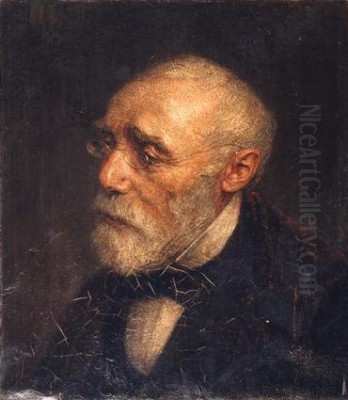
Jozef Israëls stands as one of the most respected and influential Dutch painters of the 19th century. Born on January 27, 1824, in Groningen, Netherlands, and passing away on August 12, 1911, in The Hague, Israëls dedicated his long and prolific career to capturing the essence of Dutch life, particularly the experiences of its fishermen and peasant communities. His profound empathy for his subjects and his mastery of light and shadow earned him international acclaim and the informal title of the "Dutch Millet," drawing a parallel with the French realist painter Jean-François Millet, known for his depictions of peasant farmers. Israëls was not only a painter but also a skilled printmaker, particularly noted for his etchings, and a leading figure of the Hague School, a movement characterized by its realistic and often somber portrayal of everyday life in the Netherlands.
Early Life and Formative Years
Jozef Israëls was born into a Jewish family in Groningen. His father, a money changer, initially hoped his son would follow a path into business or, according to some accounts, perhaps even become a rabbi, reflecting the family's heritage and initial aspirations. However, the young Jozef demonstrated a clear inclination towards art from an early age. Recognizing his son's burgeoning talent and passion, his father eventually supported his artistic pursuits.
His formal art education began in his hometown at the Minerva Academy of Fine Arts, where he studied from approximately 1835 to 1842. Seeking further development, Israëls moved to Amsterdam. There, he continued his studies at the Royal Academy for Fine Arts (Rijksakademie van beeldende kunsten) starting around 1840. During his time in Amsterdam, he received instruction from painters like Jan Kruseman, known for his portraits and historical paintings. This period laid the groundwork for his technical skills.
Parisian Influence and Romantic Beginnings
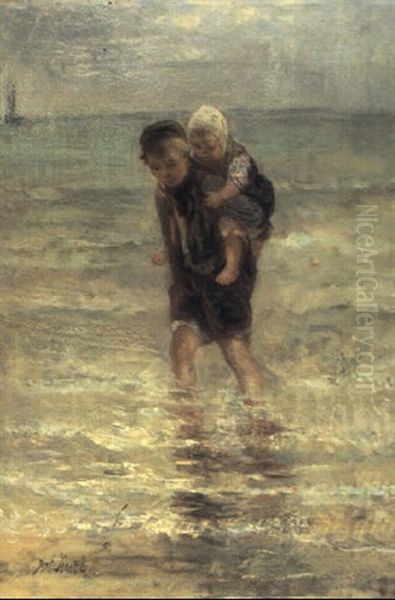
To broaden his artistic horizons, Jozef Israëls traveled to Paris between 1847 and 1848. This was a crucial period for European art, with Romanticism still a significant force. In Paris, he immersed himself in the vibrant art scene and studied in the studio of the history painter François-Édouard Picot. He also attended classes at the École des Beaux-Arts. During this time, he was exposed to the works of prominent French Romantic painters.
The influence of artists like Eugène Delacroix, with his dramatic use of color and emotion, and Paul Delaroche, known for his historical scenes often tinged with melodrama, was significant. Israëls absorbed the prevailing trends, and his early works reflected this Parisian experience. He initially focused on traditional historical subjects and Romantic portraiture, adhering to the academic conventions he had learned. These early pieces showcased his technical proficiency but had yet to reveal the unique voice he would later develop.
A Turning Point: Zandvoort and the Embrace of Realism
A significant shift in Jozef Israëls' artistic direction occurred around 1855. Suffering from health issues, he spent time recuperating in the fishing village of Zandvoort, located near Haarlem on the North Sea coast. This period proved transformative. Away from the academic constraints of studios and historical themes, Israëls directly observed the daily lives, struggles, and resilience of the local fishing community.
This immersion in the realities of rural Dutch life deeply affected him. He was moved by the fishermen's connection to the sea, their simple existence, and the hardships they faced. This experience ignited a profound sense of empathy and provided him with the subject matter that would define his mature work. He began to turn away from Romantic and historical themes, finding more profound inspiration in the authentic, unvarnished lives of ordinary Dutch people. This marked the beginning of his journey towards Realism.
Leader of the Hague School
In 1870, Jozef Israëls settled in The Hague, a city that was becoming a hub for artists seeking a more realistic and atmospheric approach to painting, distinct from the prevailing academic styles. He quickly became one of the most prominent and respected members of the group that became known as the Hague School (Haagse School). This school of painters shared an interest in depicting the Dutch landscape and the lives of its inhabitants, often working outdoors or using muted color palettes to capture specific light and atmospheric conditions.
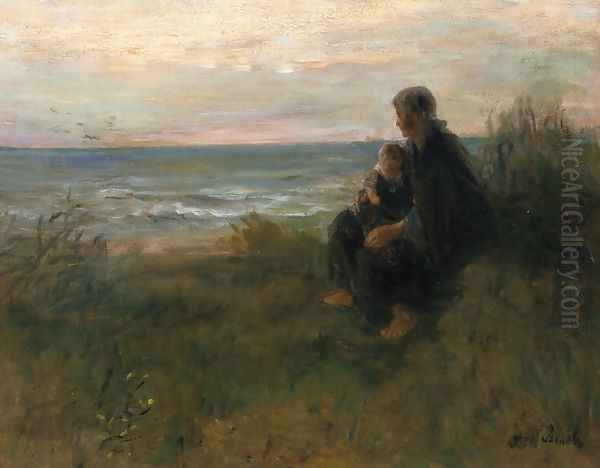
As a leading figure, Israëls greatly influenced the direction and character of the Hague School. The movement became particularly known for its depictions of peasant and fishing life, themes that Israëls had already made central to his own work. His commitment to portraying the dignity and pathos of humble lives resonated with other artists in the group, solidifying his position as a central figure in this important Dutch art movement.
Artistic Style: Realism, Empathy, and Light
Jozef Israëls' mature style is characterized by its profound Realism, infused with deep empathy for his subjects. He sought to portray the fishermen and peasants of the Netherlands not just as figures in a landscape, but as individuals with rich inner lives, facing hardship with quiet dignity. His paintings often convey a sense of melancholy or solemnity, reflecting the often difficult conditions of their existence.
A key influence on his style, particularly his use of light, was the Dutch Golden Age master Rembrandt van Rijn. Like Rembrandt, Israëls masterfully employed chiaroscuro – the dramatic interplay of light and shadow – to create mood and focus attention. He often used broad areas of shadow contrasted with focused light sources to enhance the emotional weight and tragic sense within his compositions, particularly in his interior scenes. This technique added depth and psychological intensity to his portrayals of humble homes and family moments.
His commitment to realism and his focus on the lives of the rural poor led to the comparison with Jean-François Millet, although Israëls developed his own distinct Dutch interpretation of these themes. His work avoided overt sentimentality, instead offering a sincere and respectful portrayal of his subjects' humanity.
Themes and Subjects: The Fabric of Dutch Life
The core of Jozef Israëls' oeuvre revolves around the lives of Dutch fishermen and peasants. He depicted them in various settings: inside their modest cottages, gathered around a simple meal, working by the sea, or enduring moments of sorrow and contemplation. Family life was a recurring theme, often portrayed with tenderness and an understanding of the bonds forged through shared hardship.
Beyond these central themes, Israëls also explored other subjects. He continued to paint portraits throughout his career and occasionally returned to historical or biblical themes, often interpreting them through the lens of everyday human experience. His Jewish heritage also found expression in some works, where he depicted scenes from life in Dutch Jewish quarters, offering intimate glimpses into that community. Furthermore, he produced landscapes and seascapes, often imbued with the same atmospheric sensitivity found in his genre scenes. His versatility extended across various domains of painting.
Mastery Across Mediums
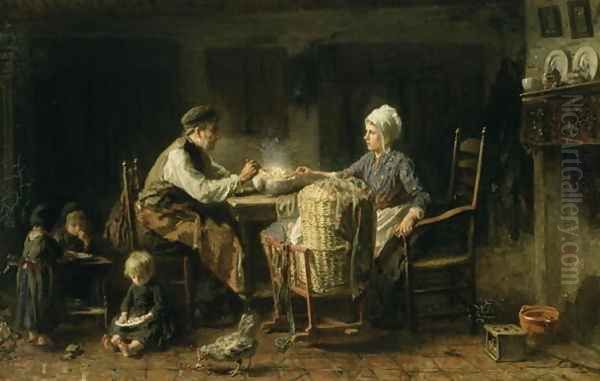
While best known for his oil paintings, Jozef Israëls was also highly accomplished in other artistic mediums. He was a masterful watercolourist, using the medium's transparency and fluidity to capture subtle effects of light and atmosphere, often in more intimate or preparatory works. His watercolours possess a distinct freshness and immediacy.
Furthermore, Israëls achieved significant recognition as a printmaker, particularly in the technique of etching. He approached etching with the same sensitivity to light, shadow, and human emotion that characterized his paintings. His etchings often revisited themes from his paintings, translating the somber moods and textures into the linear medium of print. He is considered one of the foremost Dutch etchers of his time, continuing the strong tradition of Dutch printmaking established by artists like Rembrandt centuries earlier.
Representative Works: Capturing Human Emotion
Several paintings stand out as representative of Jozef Israëls' artistic vision and style. Passing Mother's Grave (also known as Visiting the Mother's Grave) is a poignant work depicting a fisherman and his children pausing by a grave in a windswept cemetery near the dunes. It powerfully conveys themes of loss, memory, and the harsh realities faced by fishing communities. The somber tones and expressive figures encapsulate Israëls' empathetic approach.
Children of the Sea is another iconic work, portraying peasant children playing innocently by the water's edge with a small toy boat. While seemingly idyllic, the vast sea behind them hints at the potential dangers and the life of hardship that likely awaits them, adding a layer of pathos to the scene. It reflects his ability to blend childhood innocence with the underlying gravity of their environment.
Interior scenes like Peasant Family at Table (or similar titles depicting cottage interiors) showcase his mastery of chiaroscuro, influenced by Rembrandt. These works often depict families gathered for a meal or quiet moment, the dim light illuminating their faces and simple surroundings, emphasizing intimacy, poverty, and quiet endurance.
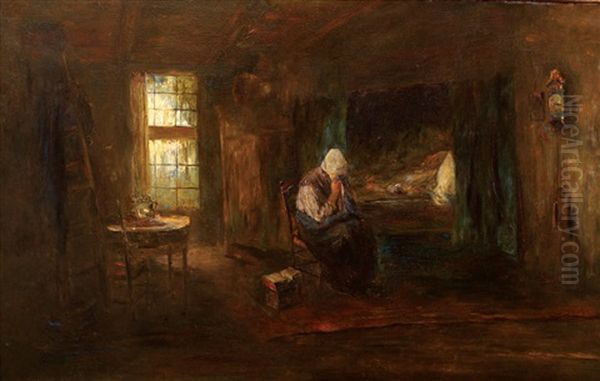
The painting Waiting captures the anxiety and patience of women looking out to sea, presumably for the return of fishermen husbands or sons. It speaks volumes about the emotional toll that life by the sea exacted on families. An earlier work, Transport of Colonial Soldiers (1858), gained him recognition at the Paris Salon and showed his engagement with different, though still human-focused, subject matter early in his shift towards realism. Another mentioned piece, Young Woman from the Thomas Mountains, points towards the breadth of his subjects, though its specific context might be less widely known.
Artistic Relationships and Influence
Jozef Israëls was not an isolated figure; he actively engaged with the art world and maintained relationships with other prominent artists. He had a close friendship with George Hendrik Breitner, another significant Dutch painter who later became associated with Amsterdam Impressionism. They reportedly worked together during periods in Paris and London. While friends, their shared interest in depicting aspects of Dutch life, particularly Breitner's later focus on Amsterdam's urban scenes, sometimes led to a friendly artistic rivalry.
Israëls also maintained a friendly relationship with the German painter Max Liebermann, a leading figure of German Impressionism who greatly admired Dutch art. They are known to have spent time together and possibly collaborated or worked alongside each other in Paris and London, highlighting Israëls' connections beyond the Netherlands.
His most significant familial artistic connection was with his son, Isaac Israëls. Isaac also became a highly successful and respected painter, initially learning from his father. However, Isaac developed a distinctly different style, embracing a brighter palette and looser brushwork associated with Impressionism. While Jozef remained rooted in the Hague School's realism and focused on rural and fishing life, Isaac became a key chronicler of modern urban life in Amsterdam, depicting bustling streets, cafes, nightlife, and working-class figures like factory girls. The stylistic divergence between father and son, despite their mutual respect, is a notable aspect of Dutch art history.
Of course, the influences on Israëls himself were crucial. Beyond his teachers Jan Kruseman and François-Édouard Picot, the impact of Romantics like Delacroix and Delaroche shaped his early work, while the enduring legacy of Rembrandt profoundly marked his mature style, particularly his use of light. The comparison to Jean-François Millet underscores his place within the broader 19th-century European movement towards Realism.
Personal Glimpses and Anecdotes
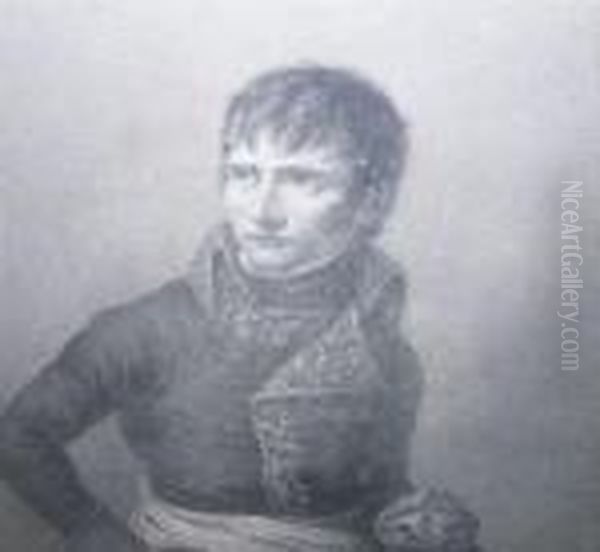
Beyond his public artistic career, glimpses into Jozef Israëls' personality and working habits emerge from various accounts. He was known for maintaining a disciplined and regular work schedule. Reports suggest he typically rose around nine in the morning and would begin painting by ten, adhering to this routine with dedication, reflecting his serious commitment to his craft.
An anecdote from his later years highlights his enduring empathy. While ill, he reportedly painted a portrait of a poor fisherman who visited him. This act, undertaken even in infirmity, resulted in what some considered one of his late masterpieces, imbued with profound emotion and understanding born from a lifetime of observing and portraying such figures.
His life story also contains the interesting narrative arc of defying initial family expectations. Born into a relatively comfortable Jewish family where a career in business or religious scholarship (as a rabbi) was initially envisioned, his unwavering passion led him down the path of art, where he achieved immense success and international recognition on his own terms.
Recognition, Honours, and Legacy
Jozef Israëls achieved considerable success and recognition during his lifetime, both in the Netherlands and internationally. His works were frequently exhibited in major European art centers, including Paris and London, as well as in numerous Dutch venues. His participation in the prestigious Paris Salon was marked by success early on, receiving an honorable mention in 1858 for Transport of Colonial Soldiers.
His contributions to art were formally acknowledged with several honours. He was awarded the prestigious Cross of the Legion of Honour in France in 1890, a significant mark of international esteem. He also received awards at major international exhibitions, including the World Fairs held in 1889 and 1900, further cementing his reputation on the global stage.
Today, Jozef Israëls' paintings, watercolours, and etchings are held in the collections of major museums around the world. Institutions such as the Art Institute of Chicago, the Ashmolean Museum in Oxford, the Cleveland Museum of Art, and numerous Dutch museums, including the Rijksmuseum in Amsterdam and the Kunstmuseum Den Haag, preserve and display his work, ensuring its accessibility to contemporary audiences.
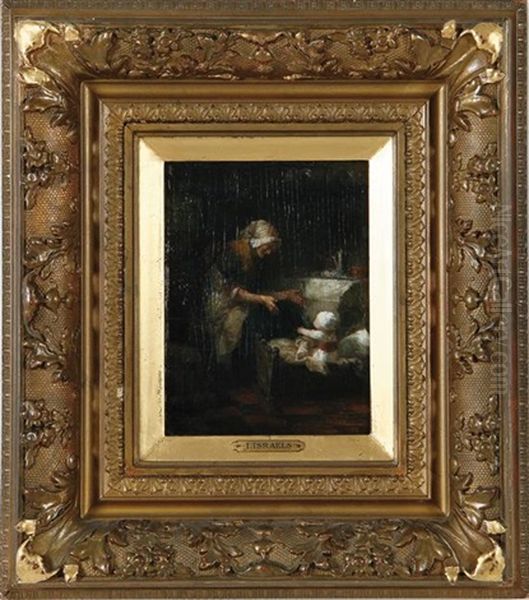
Jozef Israëls passed away in The Hague on August 12, 1911. He left behind a rich legacy as a master of Dutch Realism, a compassionate observer of human life, and a pivotal figure in the Hague School. His ability to convey deep emotion and dignity in his portrayals of ordinary people continues to resonate, securing his place as one of the most important Dutch artists of his era. His work remains a testament to the enduring power of art focused on shared human experience.